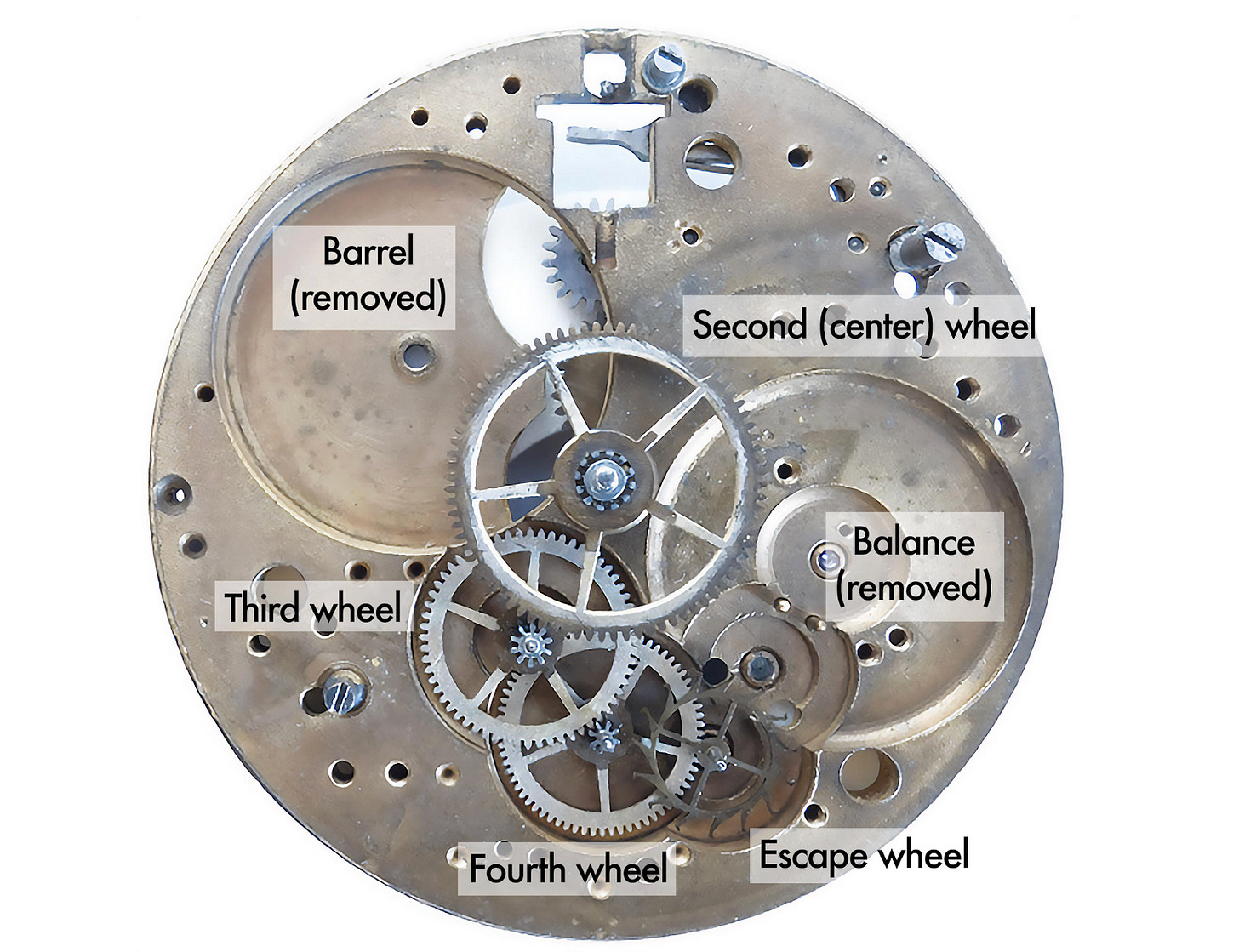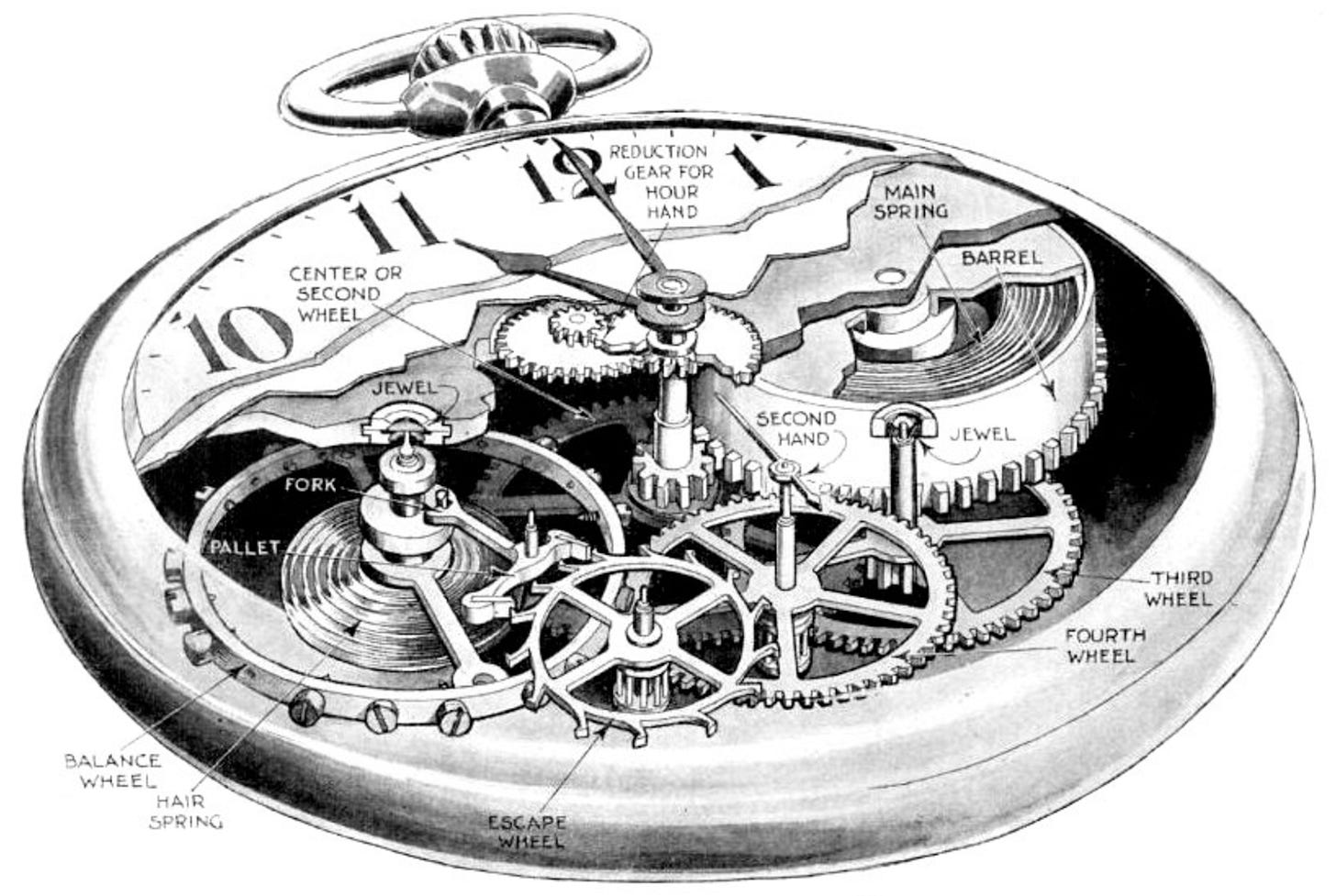The Journey of the Seconds Hand
Tracing time's evolution: from pocket watch sub-dials to the central sweep seconds hands of modern watches.
The Hidden Mechanics of Pocket Watch Seconds
Before the 20th century, pocket watches were the dominant portable timekeeping devices that commonly featured small-second sub-dials. The mechanical limitations and movement structures of the time dictated this design. Early watch movements were constructed with a central axle dedicated to the hour and minute hands, while the fourth wheel, responsible for the seconds indication, was positioned off-center. This configuration allowed the gear train—consisting of the barrel, center wheel, third wheel, and fourth wheel—to transmit energy efficiently from the mainspring to the escapement and time-indicating hands. Each wheel reduced rotational speed to create precise divisions for hours, minutes, and seconds, and the fourth wheel directly drove the seconds hand.
Fig. 1 - Diagram of the Gear Train (or Going Train)
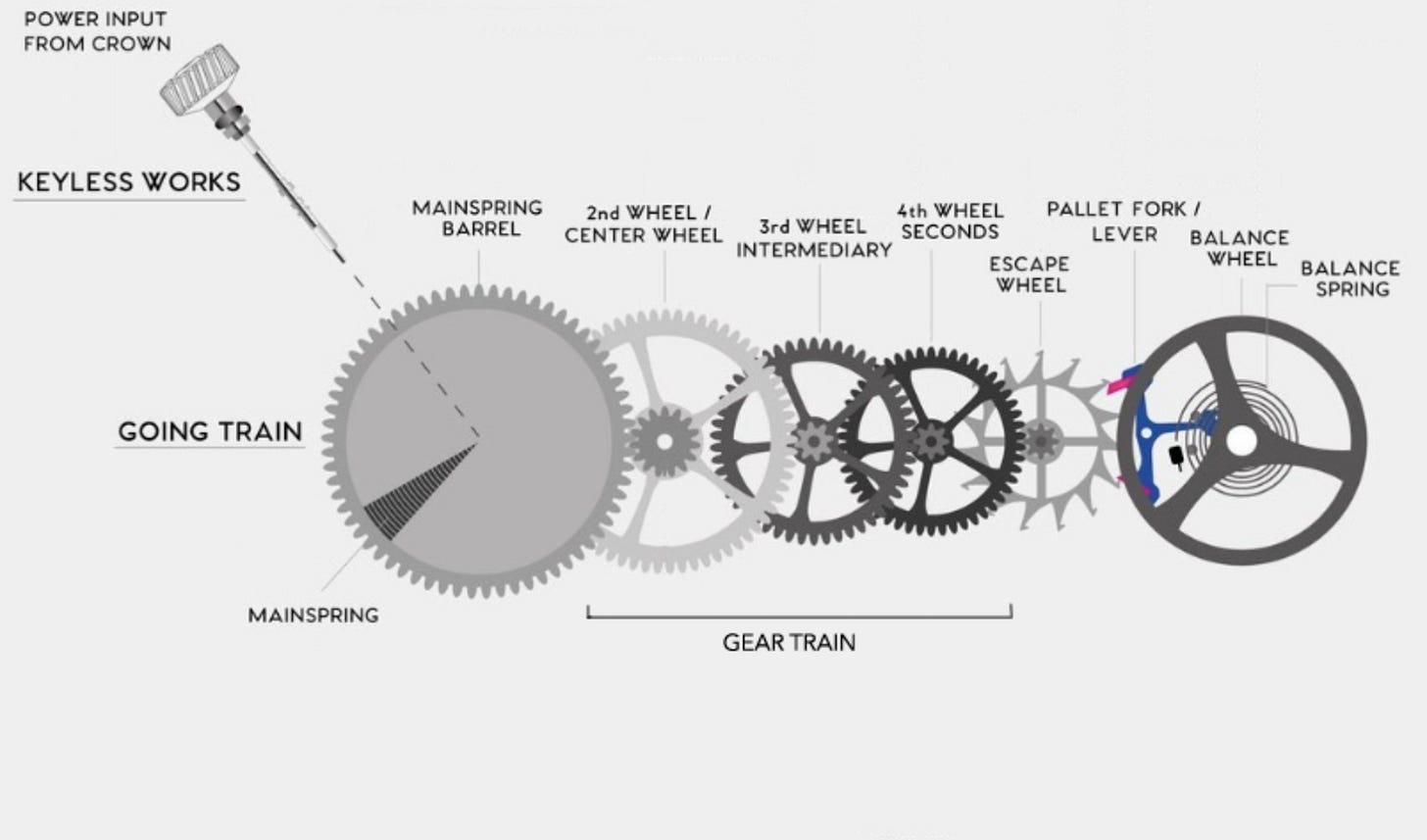
The placement of the small seconds sub-dial, typically at the 6 o'clock position, was both practical and aesthetically balanced, complementing the overall design of pocket watches. By driving the seconds hand directly from the fourth wheel, the mechanism avoided the need for intermediate gears, simplifying the movement.
Fig. 2/3 - Conventional pocket watch gear train. The fourth wheel driving the small seconds sub-dials is located at 6 o’clock.
Early wristwatches, in the early 20th century, often retained the small seconds layout by adapting pocket watch movements. These wristwatches were small pocket watches adapted for the wrist by attaching lugs to the case and adding a strap, often made of leather or fabric. As watchmaking evolved, the limitations of the small seconds sub-dial became apparent, particularly in wristwatches, where quick readability was essential. Advancements in movement design gradually addressed the limitations of the small seconds sub-dial, introducing central seconds hands that required reconfiguring the gear train.
Seconds Move to the Center
The development of center seconds mechanisms marks a significant chapter in the evolution of wristwatch movements, bridging the transition from pocket watches to modern wristwatches. During this shift, the indirectly driven center seconds mechanism emerged as an innovative solution to adapt existing pocket watch movements to the demands of wristwatches with centrally positioned seconds hands. Manufacturers could achieve this transformation without extensive redesign by employing intermediate gears to transfer motion from the off-center fourth wheel to a central pinion. This approach was cost-effective and practical, facilitating the mass production of early wristwatches.
However, the indirectly driven system presented inherent challenges. The addition of intermediate gears increased friction, impacting energy efficiency and stability. To address this, friction springs1 were often incorporated to smooth the motion of the seconds hand and prevent stuttering. Despite these adjustments, the added complexity required meticulous assembly and fine-tuning to ensure reliable performance. Over time, these limitations led to the decline of indirectly driven systems, paving the way for the directly driven center seconds mechanism—a mechanism that revolutionized wristwatch design by positioning the gear train's fourth wheel at the center of the movement. This innovation eliminated the need for intermediate gears, significantly improving energy efficiency, mechanical reliability, and overall simplicity.
World War II was pivotal in accelerating the evolution of wristwatch design, driven by the military's demand for precise, reliable, and highly readable timepieces. Soldiers, pilots, and navigators relied on watches that could perform flawlessly under challenging conditions, from low-light environments to high-stress combat scenarios. Among these innovations, the central seconds hand became indispensable, offering a more immediate and legible way to track time compared to the smaller sub-dials of earlier designs. For pilots, the central seconds hand proved crucial for quick calculations and navigational adjustments. This necessity pushed manufacturers to adopt central seconds hands in more models, establishing them as a standard in contemporary watchmaking.
Movements specifically designed for wristwatches, rather than adapted from pocket watches, popularized the direct drive system. Early examples include the Omega Caliber 30 SC (1939), part of the renowned 30 mm series celebrated for its durability and precision. The Longines Caliber 22A (1946) was one of the first automatic movements to feature a direct center seconds hand. The Rolex Caliber 1030 (1950) became a standard of reliability with its direct-driven seconds mechanism, setting a precedent for modern calibers. In high-end horology, Patek Philippe Caliber 27 SC (1949) demonstrated technical refinement, incorporating this system into a luxurious framework. These groundbreaking movements not only improved functionality but also shaped the trajectory of modern watchmaking by merging innovation with craftsmanship.
Two Seconds Hands, One Story of Time
Contemporary aesthetic appeal plays a significant role in the choice between sub-dials and central seconds hands, as it shapes how watchmakers and consumers perceive a timepiece's overall style, balance, and personality.
With its sweeping motion along the primary axis of the dial, the central seconds hand is typically favored in modern, minimalistic, and sporty designs. It provides a clean, cohesive look that enhances readability and gives a watch a sleek, balanced appearance. This design appeals to those who prefer a streamlined aesthetic that aligns with contemporary tastes for simplicity and functionality. Central seconds hands are trendy in sports and tool watches, where quick legibility and uncluttered dials are essential.
Fig. 4 - The Oris Divers Date (2024)
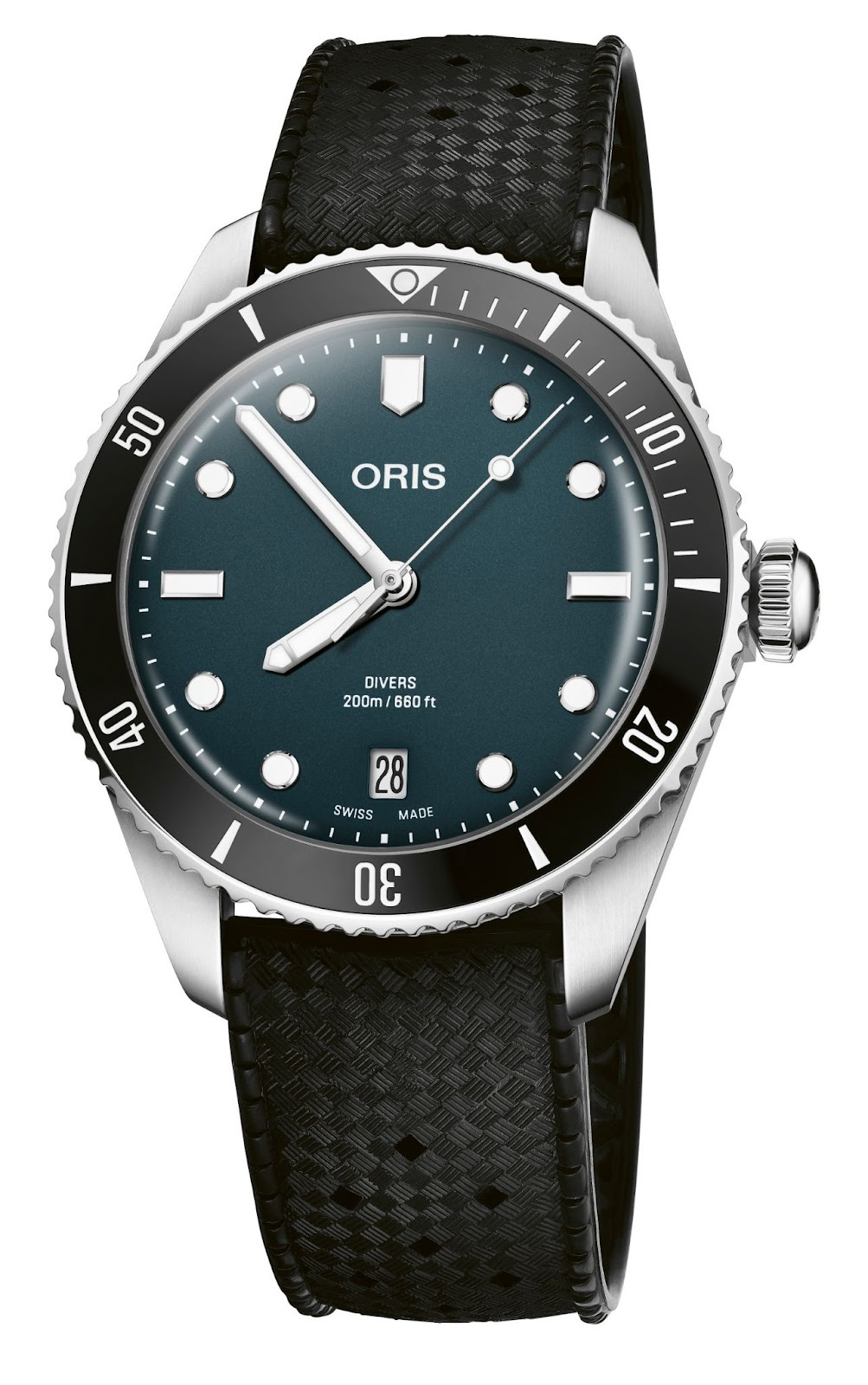
On the other hand, small seconds sub-dials evoke a more classic, vintage appeal. They are often associated with traditional watchmaking, echoing designs from pocket watches and early wristwatches. The placement of a sub-dial adds a unique focal point, creating visual interest and a sense of craftsmanship that appeals to collectors who value heritage and timelessness. For these audiences, the aesthetic appeal of the sub-dial lies in its ability to convey elegance, sophistication, and a link to horological history.
Fig. 5 - The Laurent Ferrier Square Micro-Rotor Evergreen (2023)
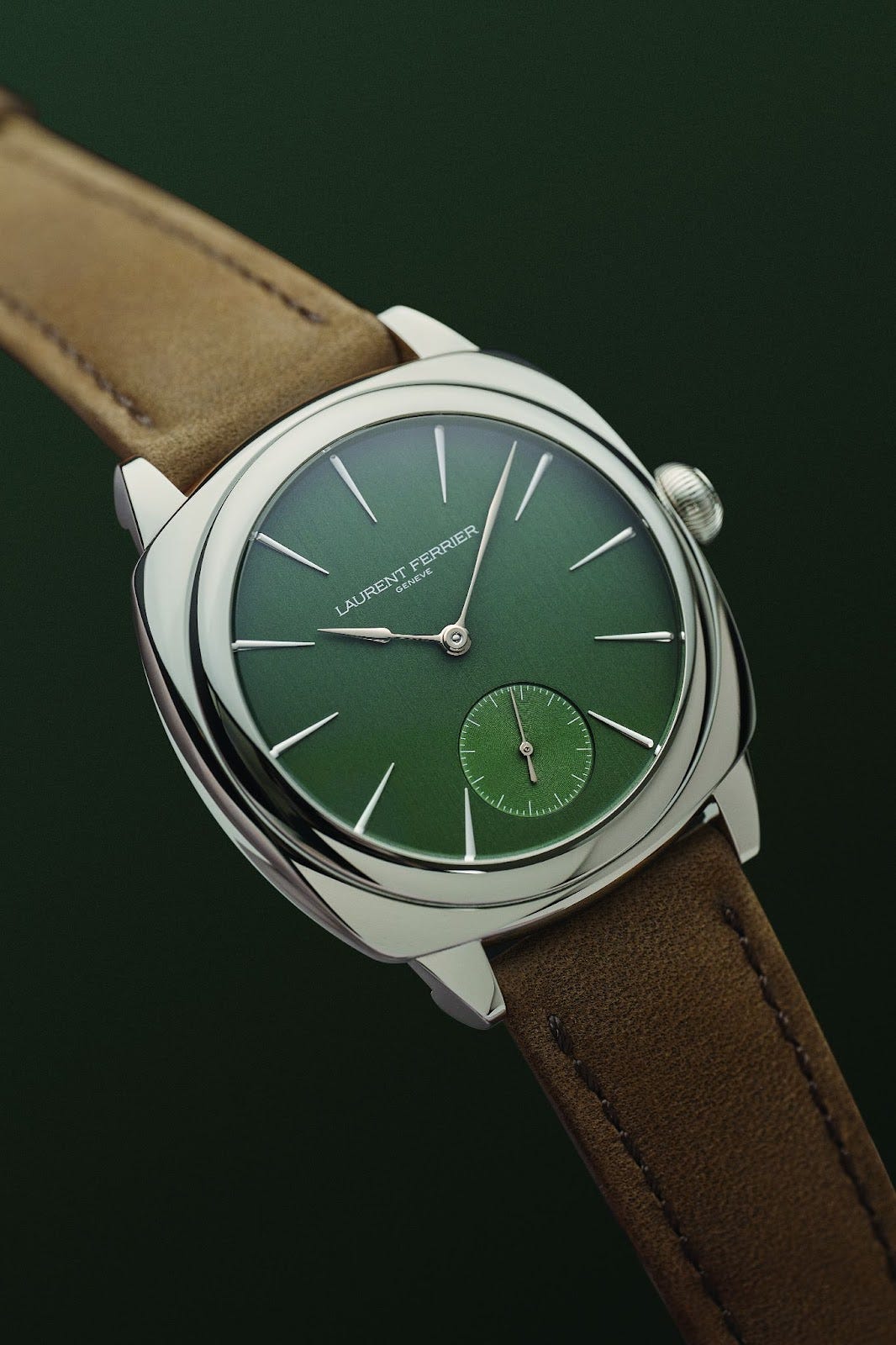
Friction springs dampen vibrations and absorb minor irregularities in the movement's gear system, ensuring a smooth and visually pleasing sweep or jump of the seconds hand.



